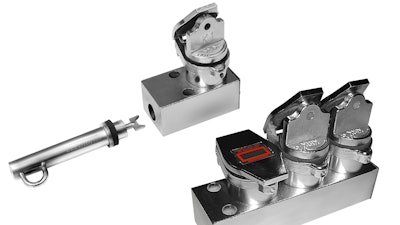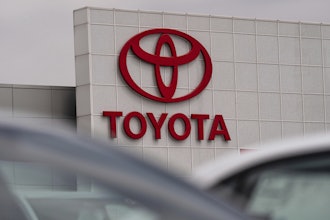
Lockout-tagout procedures are well-known in the industrial safety sector. However, lesser-known trapped key interlocks offer another level of safety. With TKIs mounted permanently on equipment, operation is impossible until the equipment has been made safe. The key is trapped in the control panel and can only be released once the machine’s power supply has been safely isolated.
When properly applied, a TKI safety system can make a significant contribution to worker safety.
TKI Construction
To fully understand a TKI safety system, it is necessary to appreciate how a TKI operates and works in conjunction with the equipment on which it is mounted.
A typical TKI consists of a lock cylinder, a support housing, a moveable 5/8” diameter locking bolt, and a cam arranged to move the locking bolt in response to the correct key. Various styles of interlock housings are available and each style is designed to be mounted in a different way, depending on the requirements of the equipment on which it will be installed.
One of the most important features of a TKI is that the key cannot be removed from the cylinder until the locking bolt is in a predetermined position.
When two or more TKIs are used in a safety application, an interlock system is formed. TKI safety systems can be designed for both linear and non-linear sequential safety operations. When properly applied, interlock systems are installed on two or more moveable parts, allowing movement of one part only when another is locked in a predetermined position.
TKIs and interlock safety systems can be classified into three main application groups, based on the type of safety application they are protecting:
- Isolation applications ensure that energy has been properly isolated and/or de-energized before operations can be performed.
- Access applications ensure energized areas where full-body access is required are properly guarded to allow entry only under safe circumstances.
- Exchange applications create a comprehensive system of both isolation and access applications, ensuring complete operational safety.
Each application can be as simple as two interlocks, or may be many interlocks keyed sequentially, forming a comprehensive safety system.
Additional Classifications
TKIs can be either mechanical or electromechanical, based on the type of interconnection the interlock establishes with the equipment. Both types of interlock have their advantages when designed within an interlock safety system and properly applied.
- Mechanical interlocks are mounted on the equipment and designed for a specific application.
- Electromechanical interlocks, while also mounted on equipment, are suitable for applications in which the next equipment within the sequence of safety operations is separated by any distance. Appropriate electrical circuits between the equipment are then required to carry signals from the electromechanical interlock communicating the state of operation.
The degree of safety provided by a TKI safety system depends on the accuracy of the operational procedure, the equipment specifications, and the specific interlocks chosen for the application. TKIs therefore must meet certain basic requirements, such as.
- Every key and lock within each combination must be interchangeable.
- No key will operate any lock other than those having the same combination as that key.
- The key should be removable only in a predetermined position.
TKI companies should also maintain complete records of all interlock devices supplied to each user, as well as their location and general application. Because each TKI application and system is unique, individual consideration is necessary to ensure the correct information is kept on file in case future shipments are needed within the same interlock system.
The accuracy and comprehensive nature of the TKI records are a major factor in being able to coordinate with the interlock system in future, if needed. These records also guarantee that only specific lock and key combinations are used at a particular location, avoiding the risk of duplication.
TKI safety systems can prevent and eliminate human errors that could lead to destructive or fatal accidents. Continued focus on overall workplace safety within safety legislation and insurance firms further incentivizes companies to have the best possible safety program in place. It is the goal of every company to create a safe working environment for its employees and a TKI safety system can play an instrumental role.
Chris Smith is the VP of Commercial Sales & Engineering at Kirk Key Interlock Company.























